Life
He was the son of Jacob Townsend (1692–1742) and Phebe (Seaman) Townsend (1699–1774). On April 2, 1757, he married Mary Hicks (1730–1796), and they had seven children.
Townsend was a deputy to the 3rd and 4th New York Provincial Congresses in 1776. He was a member of the New York State Assembly in 1784, 1784-85, 1786 and 1787.
The New York Provincial Congress (1775–1777) was an organization formed by colonists in 1775, during the American Revolution, as a pro-American alternative to the more conservative New York General Assembly, and as a replacement for the Committee of One Hundred. The Fourth Provincial Congress, resolving itself as the Convention of Representatives of the State of New York, adopted the first Constitution of the State of New York on April 20, 1777.

The New York State Assembly is the lower house of the New York State Legislature, the New York State Senate being the upper house. There are 150 seats in the Assembly, with each of the 150 Assembly districts having an average population of 128,652. Assembly members serve two-year terms without term limits.

The 7th New York State Legislature, consisting of the New York State Senate and the New York State Assembly, met from January 21 to May 12, 1784, during the seventh year of George Clinton's governorship, at New York City.
Townsend was elected as a Federalist to the 2nd United States Congress in April 1790, but died a month later, before his term began.

The Federalist Party, referred to as the Pro-Administration party until the 3rd United States Congress as opposed to their opponents in the Anti-Administration party, was the first American political party. It existed from the early 1790s to the 1820s, with their last presidential candidate being fielded in 1816. They appealed to business and to conservatives who favored banks, national over state government, manufacturing, and preferred Britain and opposed the French Revolution.

The Second United States Congress, consisting of the United States Senate and the United States House of Representatives, met at Congress Hall in Philadelphia, Pennsylvania, from March 4, 1791, to March 4, 1793, during the third and fourth years of George Washington's presidency. The apportionment of seats in the House of Representatives was based on the provisions of Article I, Section 2, Clause 3 of the United States Constitution. Additional House seats were assigned to the two new states of Vermont and Kentucky. Both chambers had a Pro-Administration majority.
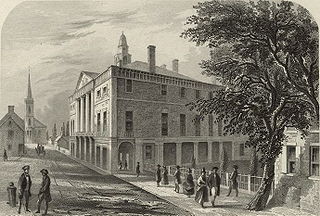
The First United States Congress, consisting of the United States Senate and the United States House of Representatives, met from March 4, 1789, to March 4, 1791, during the first two years of George Washington's presidency, first at Federal Hall in New York City and later at Congress Hall in Philadelphia. With the initial meeting of the First Congress, the United States federal government officially began operations under the new frame of government established by the 1787 Constitution. The apportionment of seats in the House of Representatives was based on the provisions of Article I, Section 2, Clause 3 of the Constitution. Both chambers had a Pro-Administration majority. Twelve articles of amendment to the Constitution were passed by this Congress and sent to the states for ratification; the ten ratified as additions to the Constitution on December 15, 1791, are collectively known as the Bill of Rights.
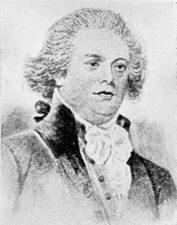
John Laurance was an American lawyer and politician from New York. A veteran of the Continental Army who served throughout the American Revolution, Laurance served in the Continental Congress, the United States House of Representatives, the United States Senate, and as Judge of the United States District Court for the District of New York.
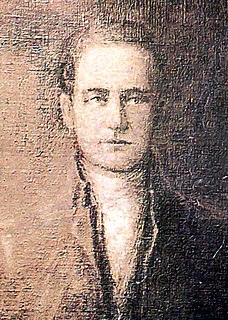
John Hathorn was an American politician and Continental Army officer from New York.

James Ross was a lawyer who represented Pennsylvania in the U.S. Senate from 1794 to 1803.
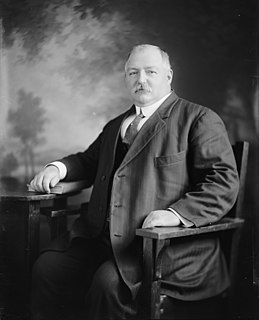
James Henry O'Brien was an American politician from New York. A Democrat, he served terms in the New York State Senate and United States House of Representatives.

Joshua Sands was an American merchant and politician. He was a U.S. Representative from New York.
Isaac Bloom was an American politician and a United States Representative from New York.
James Lent was a U.S. Representative from New York.

James Whitney Wilkin was an American lawyer and politician from New York.
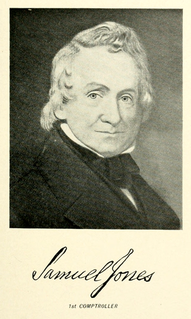
Samuel Jones was an American lawyer and politician.
The 1789 United States House of Representatives elections in New York were held on March 3 and 4, 1789, to elect 6 U.S. Representatives to represent the State of New York in the 1st United States Congress.
The 1790 United States House of Representatives elections in New York were held from April 27 to 29, 1790, to elect six U.S. Representatives to represent the State of New York in the United States House of Representatives.
The 1798 United States House of Representatives elections in New York were held from April 24 to 26, 1798, to elect ten U.S. Representatives to represent the State of New York in the United States House of Representatives of the 6th United States Congress.
The 1814 United States House of Representatives elections in New York were held from April 26 to 28, 1814, to elect 27 U.S. Representatives to represent the State of New York in the United States House of Representatives of the 14th United States Congress.
The 1816 United States House of Representatives elections in New York were held from April 23 to 25, 1816, to elect 27 U.S. Representatives to represent the State of New York in the United States House of Representatives of the 15th United States Congress. At the same time, a vacancy was filled in the 14th United States Congress.

The 5th New York State Legislature, consisting of the New York State Senate and the New York State Assembly, met from October 10, 1781, to April 14, 1782, during the fifth year of George Clinton's governorship, at Poughkeepsie.

The 8th New York State Legislature, consisting of the New York State Senate and the New York State Assembly, met from October 12, 1784, to April 27, 1785, during the eighth year of George Clinton's governorship, at New York City.

The 13th New York State Legislature, consisting of the New York State Senate and the New York State Assembly, met from July 6, 1789, to April 6, 1790, during the thirteenth year of George Clinton's governorship, first in Albany, then in New York City.

The 14th New York State Legislature, consisting of the New York State Senate and the New York State Assembly, met from January 5 to March 24, 1791, during the fourteenth year of George Clinton's governorship, in New York City.
A special election was held in New York's 1st congressional district April 26-28, 1791 to fill a vacancy left by the death of Representative-elect James Townsend (P) on May 24, 1790, before the first meeting of the 2nd Congress
















